Understanding the **dartboard target** is fundamental to enjoying and excelling in the game of darts; it’s not just about throwing pointy objects! This article will guide you through everything from the anatomy of a **dartboard target** to strategies for hitting your desired numbers, improving your **dart throwing technique**, and choosing the right equipment.
⚠️ Still Using Pen & Paper (or a Chalkboard)?! ⚠️
Step into the future! The Dart Counter App handles all the scoring, suggests checkouts, and tracks your stats automatically. It's easier than you think!
Try the Smart Dart Counter App FREE!Ready for an upgrade? Click above!
Anatomy of a Dartboard Target: Understanding the Scoring Zones
The standard **dartboard target**, officially known as the “clock” or “London board,” is a carefully designed scoring system. Familiarizing yourself with each section is crucial for strategic play. Let’s break down the anatomy of a standard bristle dartboard:
- The Bullseye: Located at the very center, the bullseye is the most coveted target. It’s divided into two sections:
- Inner Bullseye (Double Bull or 50): This is the smaller, inner ring, scoring 50 points. Landing a dart here is a high-value play and often a game-changer.
- Outer Bullseye (Single Bull or 25): The larger, outer ring around the inner bull, scoring 25 points.
- The Numbered Sections: The main area of the board is divided into 20 numbered sections, ranging from 1 to 20. Each section is a wedge shape extending from the center to the outer edge.
- The Double Ring: The thin ring around the outer edge of the numbered sections. A dart landing in this ring scores double the value of that section (e.g., double 20 scores 40). Hitting doubles is essential for finishing legs.
- The Treble Ring: Located about halfway between the bullseye and the double ring. A dart landing in this ring scores treble the value of that section (e.g., treble 20 scores 60). Trebles are key for quickly reducing your score.
- The Single Areas: The remaining portions within each numbered section that are not part of the double or treble rings. These score the face value of the number.
- The Wire Spider: The thin wires that divide the sections of the board. Landing a dart directly on a wire typically results in a “bounce-out,” meaning no score.
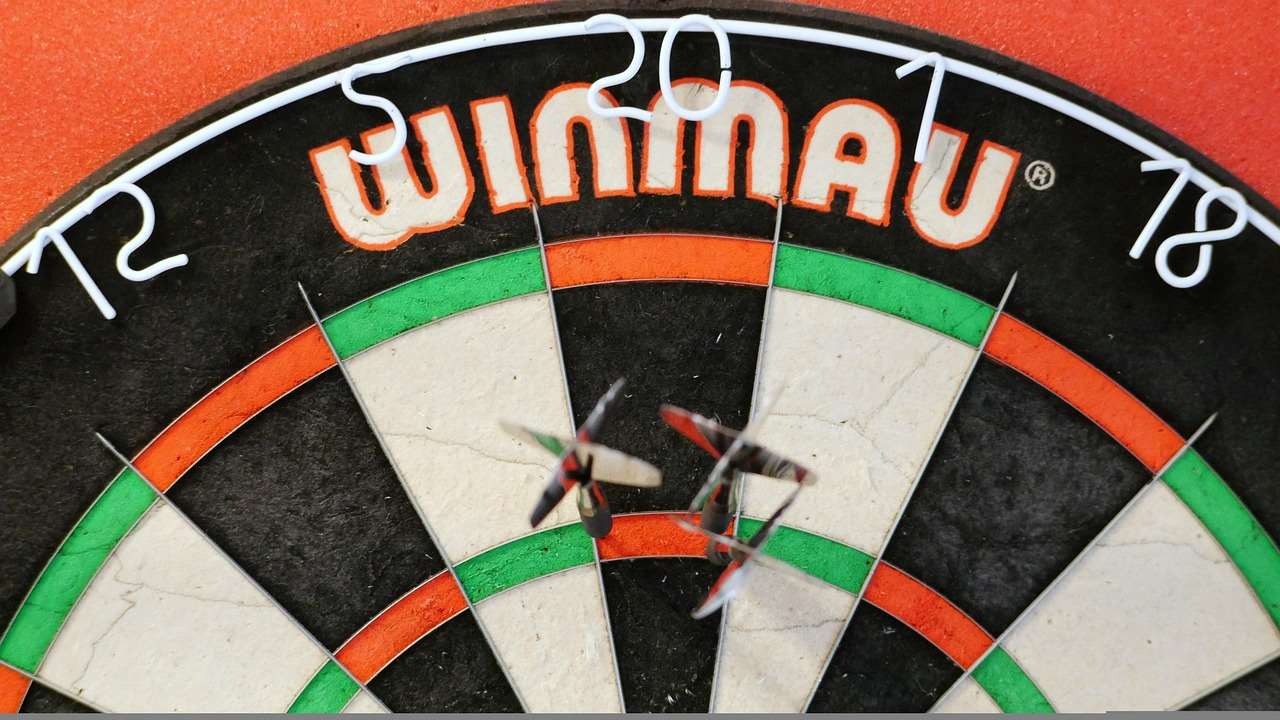
Understanding the value of each section allows you to develop strategies for maximizing your score and setting yourself up for finishes. It is important to strategize your darts finish. Targeting specific areas based on your remaining score becomes second nature with practice.
Choosing the Right Dartboard Target: Bristle vs. Electronic
When selecting a **dartboard target**, you’ll primarily encounter two types: bristle dartboards and electronic dartboards. Each type has its own advantages and disadvantages, depending on your playing style and preferences.
Bristle Dartboards: The Traditional Choice
Bristle dartboards are the standard for professional darts and are favored by many serious players. They are made from tightly packed sisal fibers, which compress upon impact from the dart, allowing the dart to stick. When the dart is removed, the fibers naturally close, prolonging the life of the board. These also make for great **darts decorations**.
- Pros:
- Self-healing surface (sisal fibers).
- Quieter than electronic boards.
- Used in professional tournaments.
- No need for batteries or power.
- Cons:
- Requires manual scoring.
- May require more maintenance (rotating the board).
Electronic Dartboards: Convenience and Features
Electronic dartboards offer a more modern and convenient experience. They feature plastic segments with small holes that the darts stick into. The board automatically calculates the score, eliminating the need for manual scoring. Many electronic dartboards also offer a variety of game options and player tracking features.
- Pros:
- Automatic scoring.
- Multiple game options.
- Player tracking features.
- Suitable for casual players and beginners.
- Cons:
- Noisier than bristle boards.
- Plastic segments can wear out over time.
- Requires power or batteries.
Ultimately, the best type of **dartboard target** for you depends on your individual needs and preferences. If you are serious about improving your game and prefer a traditional experience, a bristle board is the way to go. If you are looking for convenience and a variety of game options, an electronic board may be a better choice.
Dartboard Setup and Placement: Achieving Optimal Conditions
Proper **dartboard setup** is essential for a fair and enjoyable game. The official regulations set by organizations like the PDC (Professional Darts Corporation) ensure consistent playing conditions. Here’s a guide to setting up your dartboard:
- Height: The center of the bullseye should be exactly 5 feet 8 inches (1.73 meters) from the floor. This is a standard measurement used in all professional darts competitions.
- Throwing Distance: The oche (throwing line) should be 7 feet 9 1/4 inches (2.37 meters) from the face of the dartboard. This measurement ensures a consistent throwing distance for all players. Consider a **darts setup kit** for easy and accurate measurements.
- Toe Line: The oche should be clearly marked and at least 2 feet long. Players must stand behind the oche when throwing.
- Lighting: Adequate lighting is crucial for visibility. Position a light source above the dartboard to minimize shadows. A dedicated dartboard lighting system is ideal.
- Surround: A dartboard surround is highly recommended to protect your wall from stray darts. Surrounds are typically made of rubber or foam and can prevent damage and injuries.
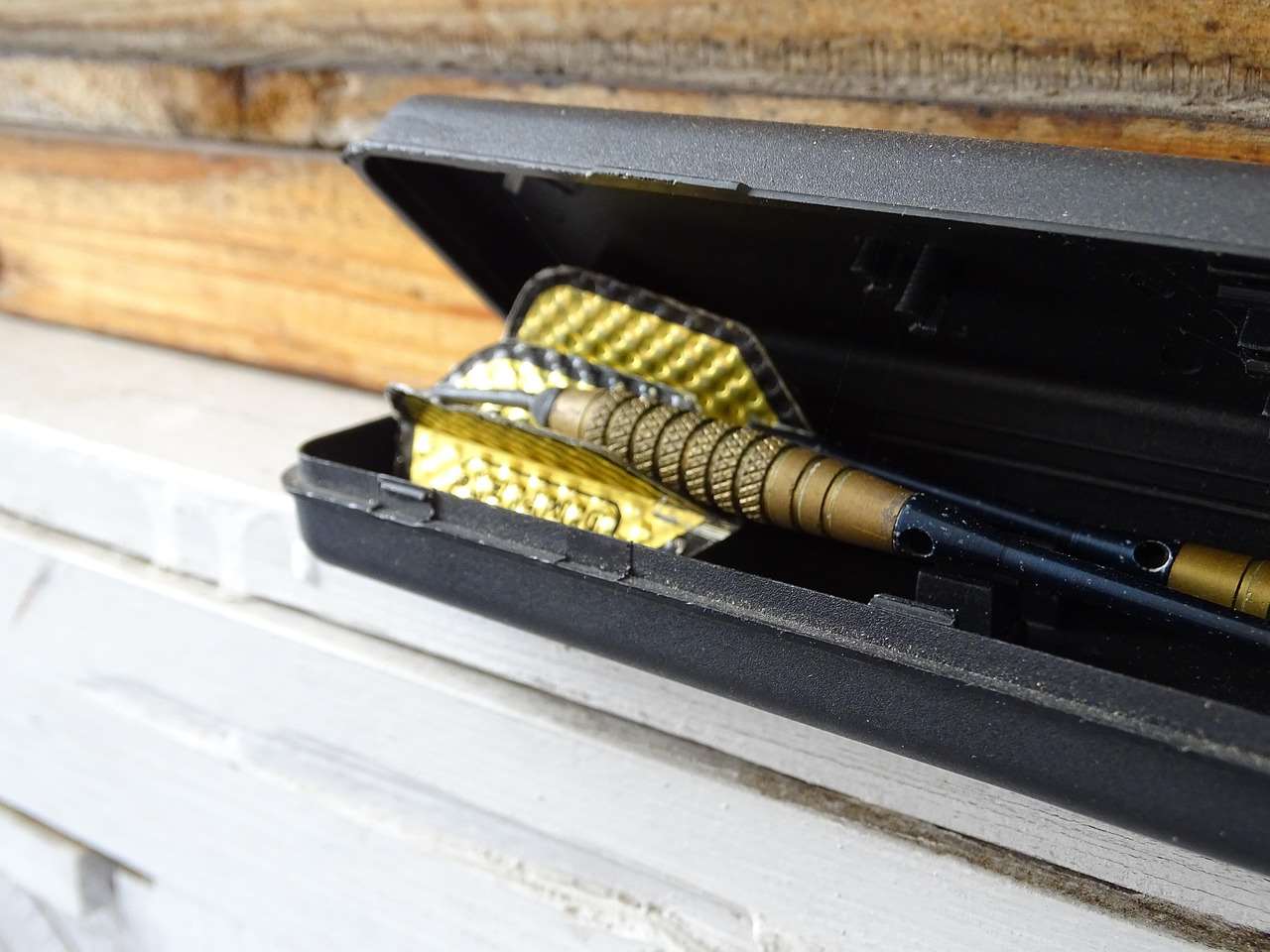
Following these guidelines will ensure that your dartboard is set up correctly, providing a consistent and enjoyable playing experience. Consider the overall setup when thinking of your **darts training rings**.
Dart Throwing Technique: Mastering the Basics
Developing a solid **dart throwing technique** is crucial for improving your accuracy and consistency. While individual styles may vary, there are some fundamental principles to keep in mind.
- Stance: Adopt a stable and balanced stance. Most players prefer to stand with one foot forward, pointing towards the dartboard. Experiment to find what feels most comfortable and natural for you.
- Grip: Hold the dart firmly but not too tightly. A comfortable grip will allow for a smooth release. Try different grip styles to see which one provides the best control. You can even **dart flights zelf maken** to customize your grip.
- Arm Movement: Keep your upper arm relatively still and focus on using your forearm and wrist to propel the dart. A smooth, controlled motion is essential for accuracy.
- Release: Release the dart at the peak of your forward motion. A consistent release point will help you maintain accuracy.
- Follow Through: Follow through with your arm motion after releasing the dart. This helps to ensure a smooth and consistent throw.
- Focus: Maintain focus on your **dartboard target** throughout the entire throwing motion. Visualize the dart hitting your target before you release it.
Practice is key to developing a consistent and effective **dart throwing technique**. Record yourself throwing darts, then evaluate. Focus on refining your grip, stance, arm movement, and release point. With dedication and practice, you can significantly improve your accuracy and consistency. Even professionals seek help from a **darts score announcer salary** coach from time to time!
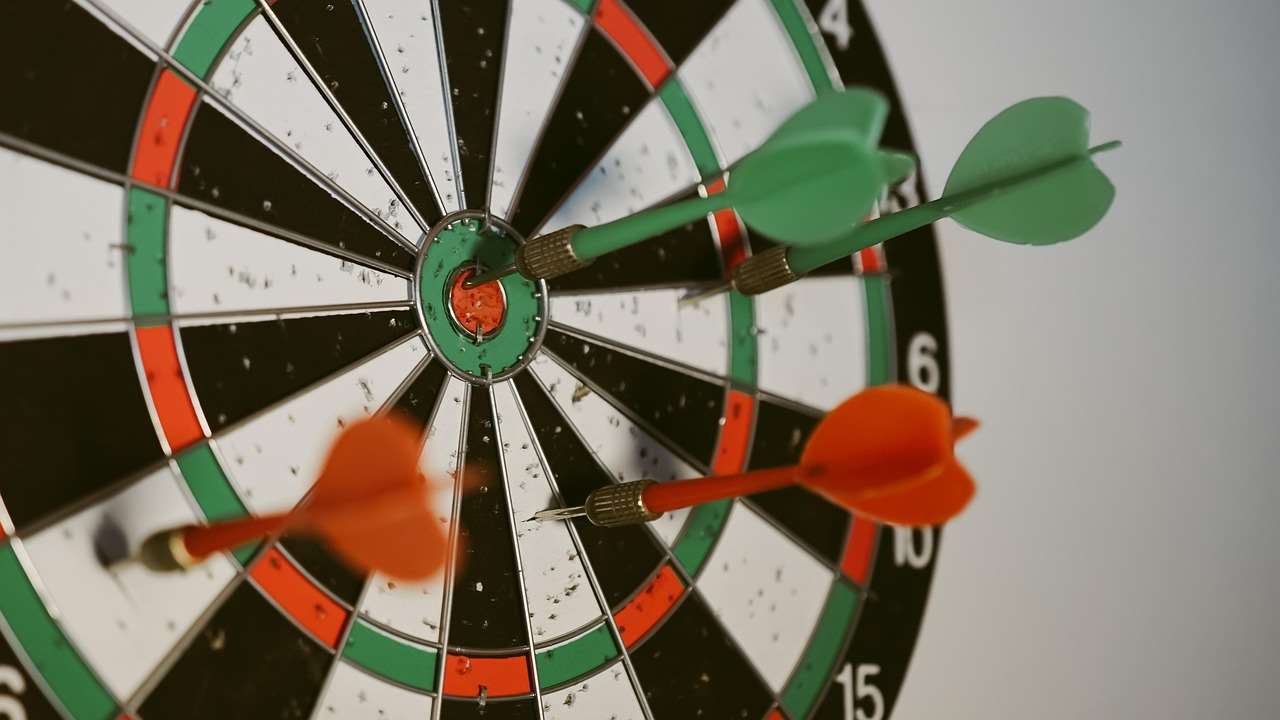
Strategies for Hitting Your Dartboard Target
While a good throwing technique is important, strategic thinking can also significantly improve your darts game. Here are some strategies for maximizing your score and hitting your desired **dartboard target**:
- Aiming: Focus on a specific point on the **dartboard target** rather than just generally aiming at the number. Visualize the dart hitting that exact spot.
- Checkout Strategy: Plan your checkout strategy in advance. Consider the best combinations of doubles and singles to finish the game. Familiarize yourself with common checkout routes.
- Target Prioritization: Prioritize targets based on your skill level and the situation. If you are not confident in hitting a treble 20, aim for a single 20 or a treble 19 instead.
- Opponent Awareness: Pay attention to your opponent’s score and playing style. Adjust your strategy accordingly.
- Risk Assessment: Assess the risks and rewards of each throw. Sometimes it is better to play it safe than to attempt a risky shot.
- Mental Game: Stay focused and positive, even when you make mistakes. A strong mental game is crucial for success in darts.
Choosing the Right Darts: Weight, Grip, and Flights
The darts you use can also impact your performance. Experiment with different dart weights, grip styles, and flight shapes to find what works best for you. You might even consider researching **darts barrel kaufen**.
- Weight: Darts typically range in weight from 20 to 26 grams. Heavier darts tend to be more stable in flight, while lighter darts can be easier to control.
- Grip: The grip of the dart refers to the texture and design of the barrel. Different grip styles offer varying levels of control and feel. Some grips are smooth, while others have knurled or ringed patterns.
- Flights: Flights are the wings on the back of the dart that stabilize it in flight. Different flight shapes and sizes affect the dart’s trajectory and speed. Larger flights provide more stability, while smaller flights offer less drag. Changing **how to put the flight on a dart** can make a difference.
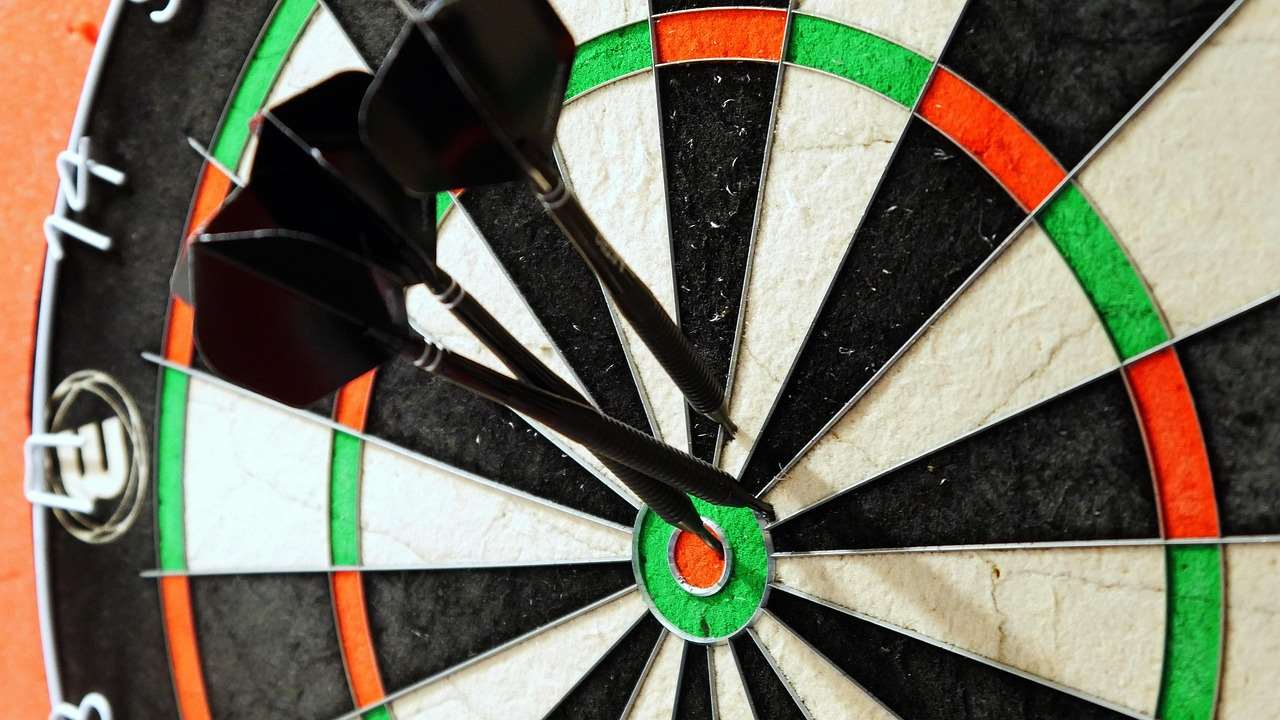
Finding the right darts is a personal process. Visit a darts shop and try out different models to see what feels best in your hand and what performs best for your throwing style. You can even research reviews of darts matches in Manchester to see what the pros use!
Practice Drills to Improve Your Dartboard Target Accuracy
Consistent practice is essential for improving your darts skills and accuracy. Here are some effective practice drills you can incorporate into your training routine.
- Around the Clock: Start at the number 1 and work your way around the board, hitting each number in sequence. This drill helps you improve your accuracy on all sections of the **dartboard target**.
- Double Practice: Focus on hitting doubles. Start with double 1 and work your way up to double 20. This drill is crucial for improving your checkout ability.
- Treble Practice: Similar to double practice, but focus on hitting trebles. This drill helps you improve your scoring power.
- Checkout Practice: Practice finishing legs from different scores. This drill will help you develop your checkout strategy and improve your ability to close out games. Consider using an **automatic dart scoring app** to track your progress.
- High Score Practice: Aim for the highest possible score with each throw. This drill will help you improve your overall scoring ability.
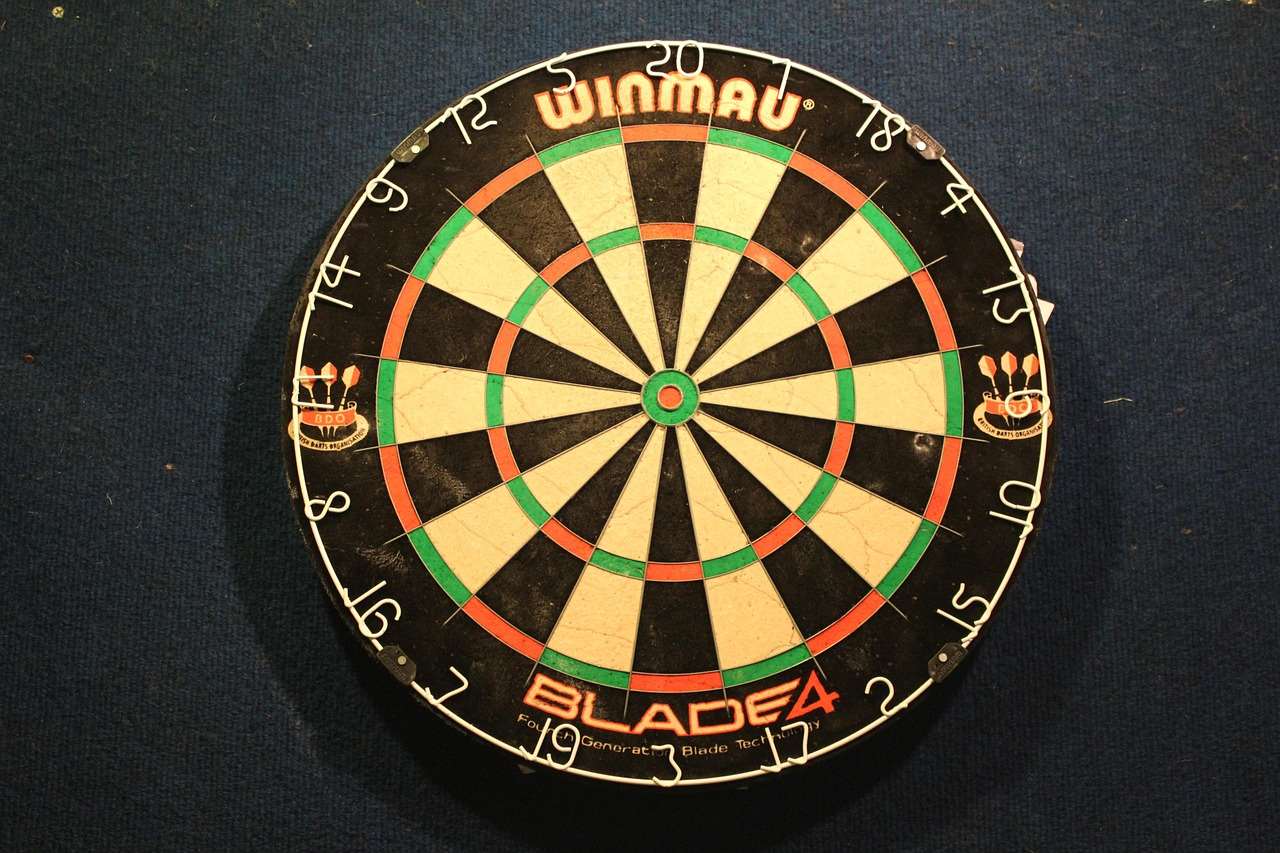
Conclusion: Mastering the Dartboard Target
Mastering the **dartboard target** is a journey that requires dedication, practice, and a strategic mindset. By understanding the anatomy of the board, choosing the right equipment, developing a solid throwing technique, and practicing consistently, you can significantly improve your game and enjoy the sport of darts to the fullest. Remember the 2023 champion worked hard to achieve those wins! So, grab your darts, step up to the oche, and start honing your skills today! Ready to take your game to the next level? Find a local darts league or tournament to test your skills and connect with other players. You can also view some inspiring **bullseye darts photos**!
Hi, I’m Dieter, and I created Dartcounter (Dartcounterapp.com). My motivation wasn’t being a darts expert – quite the opposite! When I first started playing, I loved the game but found keeping accurate scores and tracking stats difficult and distracting.
I figured I couldn’t be the only one struggling with this. So, I decided to build a solution: an easy-to-use application that everyone, no matter their experience level, could use to manage scoring effortlessly.
My goal for Dartcounter was simple: let the app handle the numbers – the scoring, the averages, the stats, even checkout suggestions – so players could focus purely on their throw and enjoying the game. It began as a way to solve my own beginner’s problem, and I’m thrilled it has grown into a helpful tool for the wider darts community.